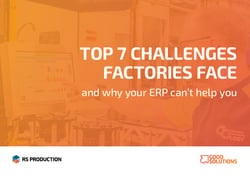
Tee time is booked for 16:45. Golf clubs in the car. All set for a perfect, sunny spring Friday.
Tom starts the car, backs out of his drive, and, with a cheerful smile on his face and a coffee in his hand, makes his way to one of his factories. 230 people are employed because of his company, and that feels great.
It’s been a busy year. Demand is unbelievable. The sales team have done a brilliant job. It’s easy to employ salespeople, and they’ve been lucky enough to get the best. But recruitment in the factory has been a challenge. They’re modern but not modern enough. The positions have been filled but not with top talent.
Expensive machinery has been sourced and installed. Training is underway and the machines are finally up and running. One less thing for Tom to explain to the owners. Big investment requires quick results. He loves being a CEO, but it has its drawbacks.
But today is Friday. Soon weekend. Soon the first chance to play 18 holes after a dismal winter.
As he pulls into the factory in his silent Tesla an engine roars behind him. Gunilla, the production manager. It’s a beautiful day for riding a motorbike.
“Early today?” Gunilla asks.
“Early start. Early finish. Golf after work,” Tom smiles.
As Tom walks into the factory, he’s greeted by quiet. The smile disappears from his face and Gunilla’s face.
“Why isn’t the machinery running?” Tom asks.
“That’s what we’re trying to work out,” sighs Anna, the production leader. She has asked her operators the same question.
In front of him there is a large machine and 3 employees flicking through manuals and pressing buttons. From there it’s a domino of dead machines and inactive workers.
But Tom doesn’t see machinery, or workers. He sees money.
500 EUR per hour. Doing nothing. And no one knows why.
“Morning meeting at 9,” says Tom, agitated. “What are the chances of having it up and running by then?”
Gunilla shrugs and hurries off. She was supposed to plan the holiday schedule with the other production managers (two weeks late already), but there is no way they’ll be able to if the machinery doesn’t miraculously start again. And in less than an hour she needs to explain to the management why it stopped in the first place.
One year in and it feels like Groundhog Day. The ERP system does its job, but it doesn’t do this job. It doesn’t explain why effectiveness is stuck at 55%. In three months she’ll be riding her bike round Champagne with her husband. The thought of wine and cheese is pretty much all that’s keeping her going.
8:47. Time to get a coffee and ready the defense.
9:00. Management is ready. Tom doesn’t look happy. Here we go again.
When Johanna, the quality manager, suggests that the company needs to invest in RS Production Gunilla just sees a big question mark. “What is RS Production?”
Tom doesn't see a question mark or software, he sees money. “How much will it cost, and how will I convince the owners to invest more?”
Johanna starts to explain.
Next time:- What is RS Production?
- Why is it different from their current ERP?
- How could Tom convince the owners?
- Will Tom make his tee time and save his Friday?
 Meanwhile, please download the first chapter of our new series "Top 7 challenges factories face and why your ERP can’t help you".
Meanwhile, please download the first chapter of our new series "Top 7 challenges factories face and why your ERP can’t help you".
